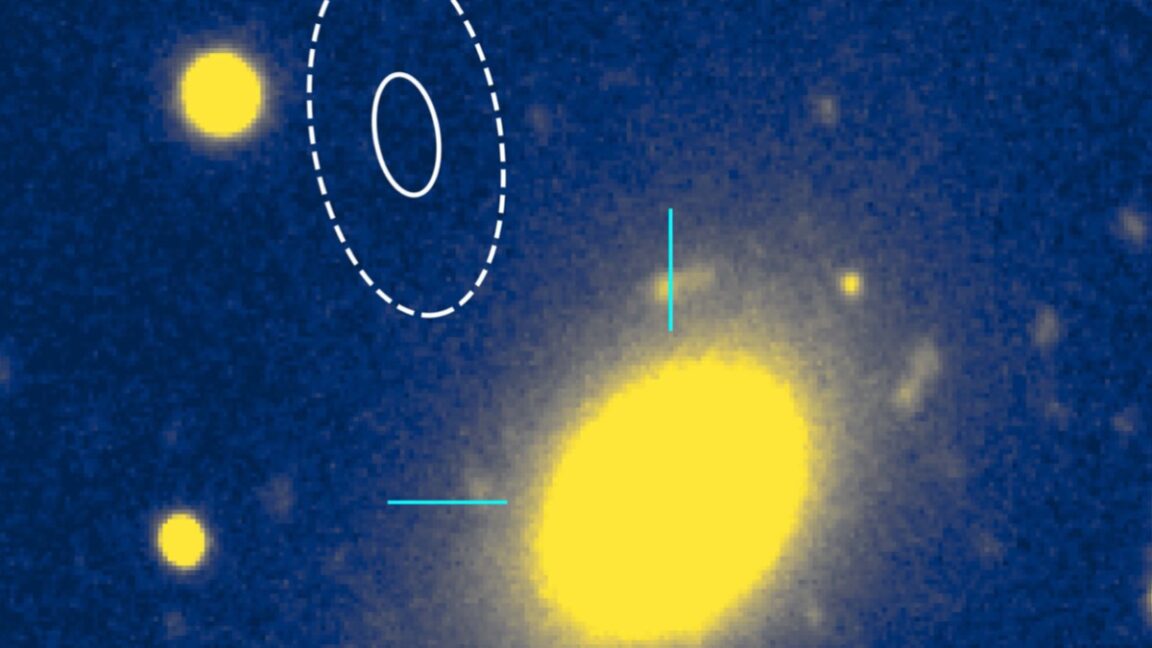Fast radio bursts (FRBs) are puzzling phenomena because their details are so difficult to resolve, and observations to date have been inconsistent. Astronomers added another piece to the puzzle with the detection of an FRB that seems to originate in a dead galaxy that is no longer producing new stars, according to a new paper published in The Astrophysical Journal Letters, along with a related paper on the event from scientists at Northwestern University.
As we’ve reported previously, FRBs involve a sudden blast of radio-frequency radiation that lasts just a few microseconds. Astronomers have observed over a thousand of them to date; some come from sources that repeatedly emit FRBs, while others seem to burst once and go silent. You can produce this sort of sudden surge of energy by destroying something. But the existence of repeating sources suggests that at least some of them are produced by an object that survives the event. That has led to a focus on compact objects, like neutron stars and black holes—especially a class of neutron stars called magnetars—as likely sources. Only about 3 percent of FRBs are of the repeating variety.
There have also been many detected FRBs that don’t seem to repeat at all, suggesting that the conditions that produce them may destroy their source. That’s consistent with a blitzar—a bizarre astronomical event caused by the sudden collapse of an overly massive neutron star. The event is driven by an earlier merger of two neutron stars; this creates an unstable intermediate neutron star, which is kept from collapsing immediately by its rapid spin.




